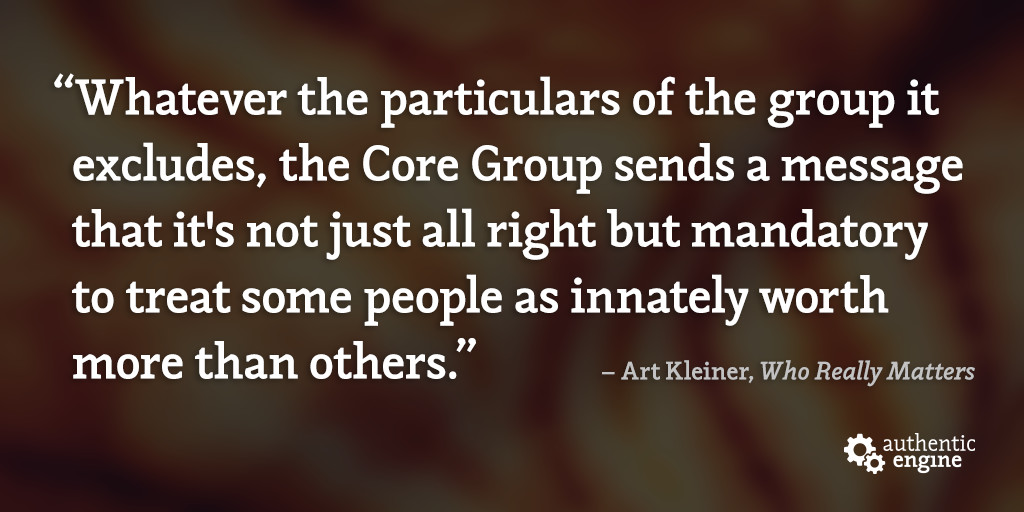 Summary: Without effort, most Core Groups will tend toward the homogeneous and exclusionary. While you might derive strength though cohesion of an insular, non-diverse group, how do you know you aren’t missing something important as a result? Diversity is a key way to build the effective integrated learning base. And, only members of the Core Group can unravel the barriers that prevents certain types of people from entering the Core Group.
Summary: Without effort, most Core Groups will tend toward the homogeneous and exclusionary. While you might derive strength though cohesion of an insular, non-diverse group, how do you know you aren’t missing something important as a result? Diversity is a key way to build the effective integrated learning base. And, only members of the Core Group can unravel the barriers that prevents certain types of people from entering the Core Group.
Who Really Matters (Amazon, Goodreads, Powells) puts forth the theory that central to every organization is a Core Group of people who really matter.
This post is part of a series summarizing the book and covers Chapter 13: Glass Ceilings. You may want to start with the introduction.
Chapter 13: Glass Ceilings
This chapter explores the importance of Core Group diversity and inclusion.
Using the example of a liberal-arts college in the Rocky Mountains where Core Group membership is dependent on being a lifelong skier, Kleiner demonstrates that without effort, most Core Groups will tend toward the homogeneous and exclusionary. This is human nature; we are comforted by and therefore gravitate towards people like us.
While training and other awareness raising strategies can improve how employees communicate and work with those different from themselves, Kleiner asserts that only the Core Group can truly address issues of diversity and inclusion:
Diversity is a Core Group issue. If conversations about diversity in an organization bypass the Core Group, then the organization hasn’t dealt with diversity at all. […] No one else can do it; no one else has the wherewithal to unravel the barrier that prevents certain types of people from entering the Core Group no matter how valuable or worthy they might be. (p. 117)
The entire organizations learns from the Core Group, via its composition, not only who is valued, but that some people are to be valued more than others:
Whatever the particulars of the group it excludes, the Core Group sends a message that it’s not just all right but mandatory to treat some people as innately worth more than others. (p. 119)
People across the organization internalize and propagate this attitude, eventually believing it about themselves.”I’m not as valuable because I’m not part of the Core Group.”
Next, Kleiner explore why diversity matters at all. Core Groups that are insular and homogeneous enjoy a strength and cohesion derived at least in part from their homogeneity. Unfortunately this also creates a kind of myopia:
How do you know you aren’t missing something important as a result? And if others in the organization are aware of this, how do they get both the permission and the wherewithal to bring it to your attention? (p. 119)
Diversity is a key way to build the effective integrated learning base mentioned in Chapter 7:
A Core Group needs to understand the lives of its organization’s constituents — which means being willing and able to learn from them. (p. 120)
Furthermore, excluding whole groups of people from the Core Group can be a liability:
People who are excluded from the Core Group either establish themselves as employees of mutual consent or leave to find a Core Group (and sometimes take their customers with them). (p. 120)
What’s Next?
Stay tuned for our next post in this series, a summary of Chapter 14.
Citations
Kleiner, Art. Who Really Matters: The Core Group Theory of Power, Privilege, and Success. 1st ed. New York: Currency/Doubleday, 2003.
This post is part of our Book Summary series in which we share summaries of books about leadership, governance, and community building. To discuss the book, leave a comment below or join our Goodreads group.


0 Comments